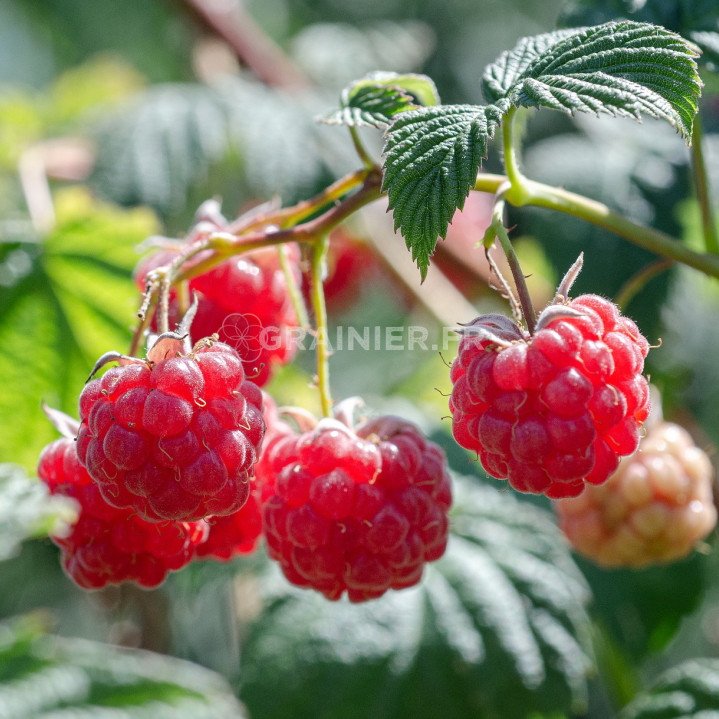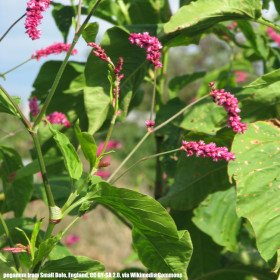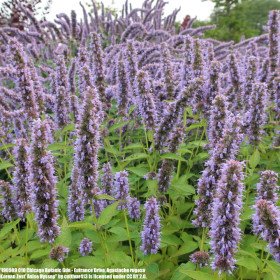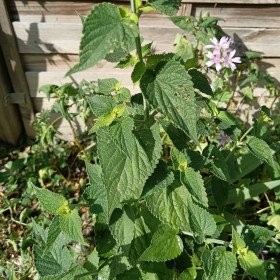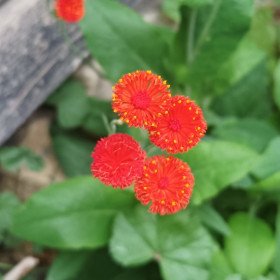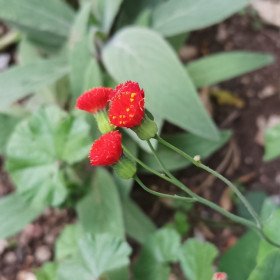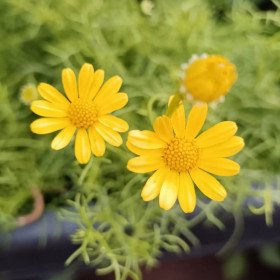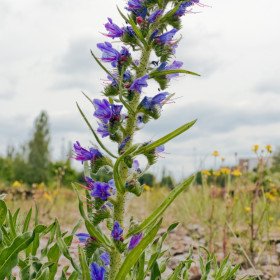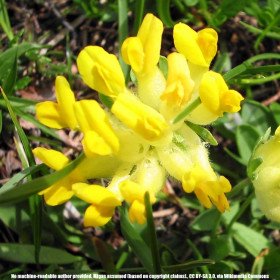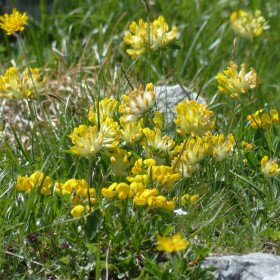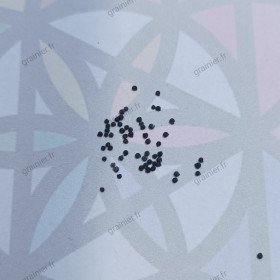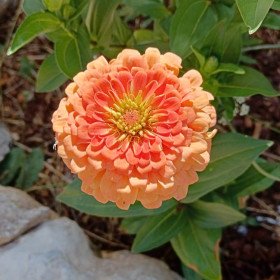20 Graines Framboisier sauvage, Rubus idaeus
20 Graines Framboisier sauvage, Rubus idaeus
- Modèle : 20 Graines Framboisier sauvage, Rubus idaeus
- Disponibilité : INDISPONIBLE
- 1,50€
Me contacter dès que le produit est disponible
Framboisier sauvage, Framboise sauvage, Rubus idaeus |
Le Framboisier (Rubus idaeus L., 1753, littéralement la Ronce du mont Ida) est une espèce d'arbrisseaux de la famille des Rosacées (tribu des Rubae), couramment cultivée pour leurs petits fruits, les framboises.
20 graines -Tremper les graines 24 h dans l'eau avant semis à 18/20°C
Le framboisier est un arbrisseau et aussi un arbre sous forme de plante à tiges dressées, cylindriques pouvant atteindre 1,5 à 2 m de haut. Ces tiges sont bisannuelles et meurent la deuxième année après fructification. La souche drageonnante, vivace, émet de nouvelles tiges chaque année. Les tiges sont armées d'aiguillons peu piquants.
Les feuilles sont pennées, celles de la base comportent 5 à 7 folioles dentées, les feuilles supérieures sont trifoliolées. Elles sont tomenteuses, blanchâtres sur leur face inférieure1.
Les fleurs blanches sont réunies par groupes de 5 à 10. Le pistil est formé de nombreux carpelles.
Les fruits sont composés, formés d'un ensemble de petites drupes. Non adhérentes au cône du réceptacle, elles s'en détachent facilement à maturité. Cette non-adhérence est d'ailleurs un critère distinguant les framboisiers au sens large par rapport aux ronces dont le réceptacle reste sur le fruit.
Le framboisier est très cultivé et souvent naturalisé dans les pays tempérés. Sa culture semble remonter à la fin du Moyen Âge.
Espèce rustique (Zone USDA 4), indifférente au terrain pourvu qu'il soit frais et bien drainé. Résiste bien au froid mais craint les fortes chaleurs et la sécheresse sauf quelques rares variétés adapté au climat méditerranéen ('Capitou', 'Gradina', 'Magnific Delbard', 'September').
Il se trouve mieux à mi-ombre qu'en plein soleil.
La production atteint son niveau normal la troisième année. La plantation peut durer plusieurs années, environ 10 ans.
Les framboisiers ne se taillent que pour supprimer le bois mort. Les tiges, appelées « canes », ou les parties de tiges qui ont produit ne fructifient qu’une seule fois, ensuite elles se dessèchent et meurent. Lorsqu'elles sèchent, elles prennent une couleur foncée, il faut alors les tailler au ras du sol ; cela s'appelle les « rabattre ». Les jeunes pousses vertes qui sont des drageons sont amenées à fructifier dans l'année. Elles doivent être conservées intactes, éventuellement épointées à 0,80 m ou 1 mètre4.
La capacité de drageonnement, autrement dit le nombre de cannes apparaissant sur une touffe, est différente d'une variété à l'autre et peut augmenter avec l'ancienneté de l'implantation sur le terrain. Il n'est pas toujours souhaitable d'obtenir un grand nombre de cannes. Il vaut même mieux éclaircir les plus faibles au cours de l'hiver pour conserver une densité qui ne nuise pas à la qualité des fruits.
La récolte se fait lorsque les fruits sont bien mûrs. Ceux-ci ne se conservent pas et doivent être consommés ou transformés très rapidement.
Multiplication par séparation de drageons ou de morceaux de racines (en novembre) ou par bouture de pousses de l'année (en début d'été).
Une espèce de mouche, la cécidomyie Lasioptera rubi peut déposer ses œufs en mai sur les petites pousses, et provoquer l'apparition d'une grosse galle et de vers dans les fruits. Pour éviter cela on recommande de planter des plants de myosotis au pied des framboisiers. En effet, ceux-ci font fuir la mouche.
Contenu soumis à la licence CC-BY-SA 3.0. Source : Article Framboisier de Wikipédia en français (auteurs)
Etiquettes : sauvage, framboisier, framboise, rubus, idaeus, GRAINES DE FLEURS & ARBRES Framboisier sauvage, Framboise sauvage, Rubus idaeus, Aromatiques & médicinales Framboisier sauvage, Framboise sauvage, Rubus idaeus, Fleurs & Herbes ornementales Framboisier sauvage, Framboise sauvage, Rubus idaeus, GRAINES POTAGÈRES & AROMATIQUES Framboisier sauvage, Framboise sauvage, Rubus idaeus, Framboisier sauvage, Framboise sauvage, Rubus idaeus GRAINES DE FLEURS & ARBRES, Framboisier sauvage, Framboise sauvage, Rubus idaeus Aromatiques & médicinales, Framboisier sauvage, Framboise sauvage, Rubus idaeus Fleurs & Herbes ornementales, Framboisier sauvage, Framboise sauvage, Rubus idaeus GRAINES POTAGÈRES & AROMATIQUES

